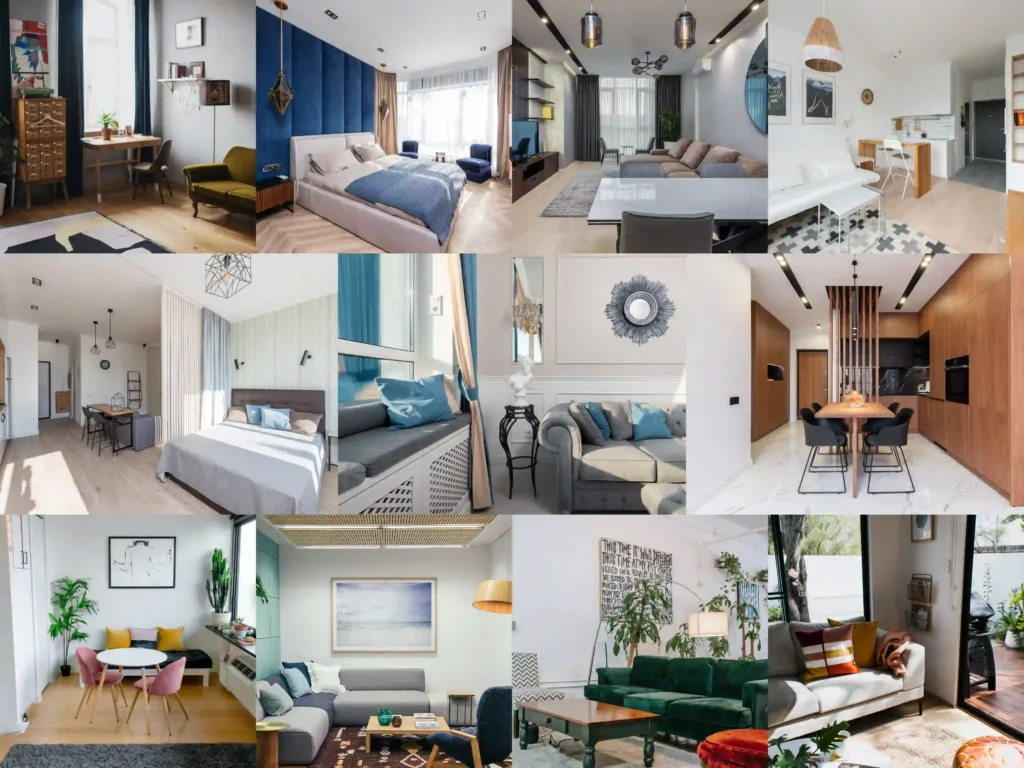
Have you ever wished you could wave a magic wand and make your small living space feel more spacious? While we can’t offer you a magic wand, we can certainly provide you with some practical tips and design ideas that will make your compact space feel open, inviting, and comfortable. Let’s explore how to make a small space feel larger, all while infusing it with a touch of your unique personality.
1. Light Colors and Clever Contrasts
One of the easiest ways to open up a space is to use light colors on the walls and ceilings. Soft hues like pale blues, greens, or neutrals create an airy atmosphere and reflect light effectively. But don’t let this restrict your creativity! You can add pops of color through your furniture, artwork, or accent pieces. The contrast between light walls and colorful elements can draw the eye and create depth.
2. Strategic Use of Mirrors
Mirrors are like secret weapons in the battle against small spaces. They reflect light and create the illusion of depth. Large mirrors on a wall or mirrored furniture can be particularly effective. Not only do they make the space feel bigger, but they also add a touch of elegance.
3. Multi-Functional Furniture
When space is limited, every piece of furniture should earn its keep. Invest in multi-functional furniture, such as a sofa bed or a coffee table with storage. These pieces serve more than one purpose, saving space and making your home more versatile.
4. Open Shelving and Vertical Storage
Opt for open shelving instead of closed cabinets. Closed storage can make a room feel cramped, while open shelves provide a sense of space and offer an opportunity to display decorative items. Utilize vertical space with tall bookshelves or cabinets to maximize storage without sacrificing floor area.
5. Let There Be Light
Good lighting can work wonders in a small space. Maximize natural light by using sheer curtains or blinds that allow sunlight to filter in. When it comes to artificial lighting, opt for fixtures that illuminate the entire room evenly. Wall-mounted sconces and pendant lights can free up valuable floor and table space.
6. Scale Your Furniture Wisely
Choose furniture that is appropriately scaled for your space. Oversized furniture can overwhelm a small room, while smaller pieces can make it feel more open. Be mindful of the proportions to create a harmonious layout.
7. Create Zones
Even in a small space, you can create distinct zones for different activities. Use area rugs or furniture arrangement to define these zones. For example, a small living room can include a cozy reading nook or a workspace with a well-placed desk.
8. De-clutter Regularly
Clutter is the nemesis of small spaces. Regularly de-clutter your home by getting rid of items you no longer need or use. Consider minimalistic decor that focuses on a few cherished pieces rather than overcrowding your space with trinkets.
9. Use Transparent and Lucid Elements
Opt for furniture with transparent materials, such as glass or acrylic. These materials allow the eye to move through them, creating a sense of openness. Transparent chairs or glass coffee tables are excellent choices.
10. Incorporate Greenery and Nature
Introducing houseplants and natural elements into your small space can breathe life into it and make it feel more open. The presence of greenery not only adds a touch of nature but also visually connects your interior to the outdoors. Choose plants that thrive indoors and fit the scale of your space. Caring for them can also bring a sense of fulfillment and nurturing to your home.
In conclusion, making a small space feel larger is a creative endeavor that involves thoughtful design choices, smart storage solutions, and a dash of personal flair. With the right approach, your compact living space can become a cozy, welcoming, and open environment where you can truly feel at ease.
